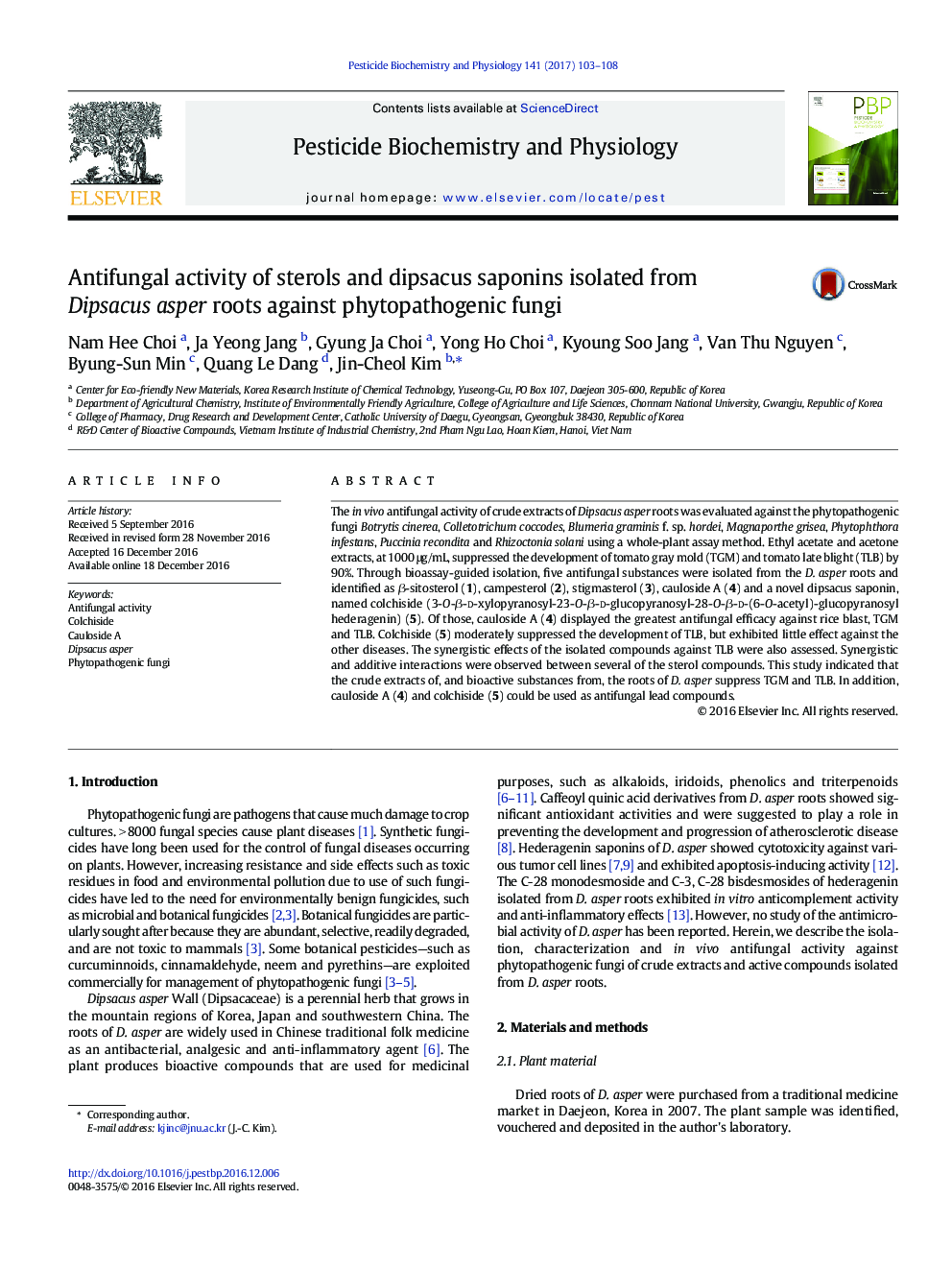| Article ID | Journal | Published Year | Pages | File Type |
|---|---|---|---|---|
| 5514830 | Pesticide Biochemistry and Physiology | 2017 | 6 Pages |
â¢Dipsacus asper root extracts strongly suppressed gray mod and late blight on tomato plants.â¢Five metabolites including a new metabolite, colchiside, were isolated.â¢Cauloside A highly controlled rice blast, tomato gray mold and tomato late blight.
The in vivo antifungal activity of crude extracts of Dipsacus asper roots was evaluated against the phytopathogenic fungi Botrytis cinerea, Colletotrichum coccodes, Blumeria graminis f. sp. hordei, Magnaporthe grisea, Phytophthora infestans, Puccinia recondita and Rhizoctonia solani using a whole-plant assay method. Ethyl acetate and acetone extracts, at 1000 μg/mL, suppressed the development of tomato gray mold (TGM) and tomato late blight (TLB) by 90%. Through bioassay-guided isolation, five antifungal substances were isolated from the D. asper roots and identified as β-sitosterol (1), campesterol (2), stigmasterol (3), cauloside A (4) and a novel dipsacus saponin, named colchiside (3-O-β-d-xylopyranosyl-23-O-β-d-glucopyranosyl-28-O-β-d-(6-O-acetyl)-glucopyranosyl hederagenin) (5). Of those, cauloside A (4) displayed the greatest antifungal efficacy against rice blast, TGM and TLB. Colchiside (5) moderately suppressed the development of TLB, but exhibited little effect against the other diseases. The synergistic effects of the isolated compounds against TLB were also assessed. Synergistic and additive interactions were observed between several of the sterol compounds. This study indicated that the crude extracts of, and bioactive substances from, the roots of D. asper suppress TGM and TLB. In addition, cauloside A (4) and colchiside (5) could be used as antifungal lead compounds.
Graphical abstractDownload high-res image (324KB)Download full-size image
